
The Enchanting Isle of Harris: A Scottish Gem
Discover the Isle of Harris: A breathtaking Scottish island with stunning beaches, rich heritage, and a unique culinary scene.
The Isle of Harris, part of the Outer Hebrides in Scotland, is a destination that offers a perfect mix of rugged landscapes, pristine beaches, and rich cultural heritage. Known for its dramatic scenery, the island is a haven for nature lovers and adventure seekers alike. The stunning Luskentyre Beach, with its turquoise waters and white sands, is often cited as one of the best beaches in the world and provides an idyllic setting for a day of relaxation or exploration. Beyond its natural beauty, Harris is steeped in history and tradition. The island is renowned for Harris Tweed, a handwoven fabric that has been produced here for centuries. Visitors can tour local mills and watch skilled artisans at work, gaining insight into this unique craft. The ancient standing stones of Callanish and the historic St Clement's Church are also must-visit sites, offering glimpses into the island's storied past. Food enthusiasts will delight in the local cuisine, which features fresh seafood and locally sourced ingredients. Dining in Harris is a treat, with many restaurants and cafes offering dishes that highlight the island's rich culinary traditions. Whether you're enjoying a seafood platter at a local eatery or sipping a dram of whisky while overlooking the sea, the Isle of Harris promises an unforgettable experience.
Local tips in Isle of Harris
- Visit in the summer months for the best weather and longer daylight hours.
- Bring waterproof clothing as the weather can be unpredictable.
- Rent a car to fully explore the island's remote areas and hidden gems.
- Check ferry schedules in advance, especially if you're planning a day trip.
- Book accommodation early during peak season to ensure availability.
The Enchanting Isle of Harris: A Scottish Gem
The Isle of Harris, part of the Outer Hebrides in Scotland, is a destination that offers a perfect mix of rugged landscapes, pristine beaches, and rich cultural heritage. Known for its dramatic scenery, the island is a haven for nature lovers and adventure seekers alike. The stunning Luskentyre Beach, with its turquoise waters and white sands, is often cited as one of the best beaches in the world and provides an idyllic setting for a day of relaxation or exploration. Beyond its natural beauty, Harris is steeped in history and tradition. The island is renowned for Harris Tweed, a handwoven fabric that has been produced here for centuries. Visitors can tour local mills and watch skilled artisans at work, gaining insight into this unique craft. The ancient standing stones of Callanish and the historic St Clement's Church are also must-visit sites, offering glimpses into the island's storied past. Food enthusiasts will delight in the local cuisine, which features fresh seafood and locally sourced ingredients. Dining in Harris is a treat, with many restaurants and cafes offering dishes that highlight the island's rich culinary traditions. Whether you're enjoying a seafood platter at a local eatery or sipping a dram of whisky while overlooking the sea, the Isle of Harris promises an unforgettable experience.
When is the best time to go to Isle of Harris?
Iconic landmarks you can’t miss
Calanais Standing Stones
Discover the ancient mysteries of Calanais Standing Stones, a breathtaking historical landmark on the Isle of Lewis, steeped in Scottish heritage and breathtaking landscapes.
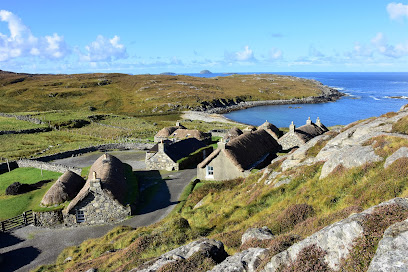
Butt of Lewis Lighthouse
Explore the historic Butt of Lewis Lighthouse, a stunning coastal gem offering breathtaking views and rich maritime history on the Isle of Lewis.
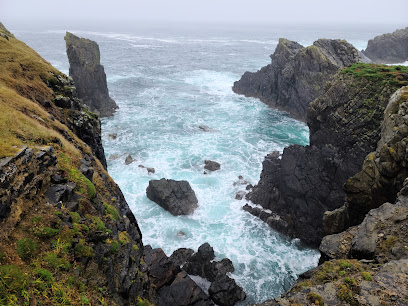
Luskentyre Beach
Explore the stunning Luskentyre Beach on the Isle of Harris, where golden sands meet turquoise waters in a breathtaking natural paradise.

St Clement's Church : Rodel
Discover the historic St. Clement's Church on the Isle of Harris, a serene destination blending spirituality and stunning architecture amidst breathtaking landscapes.

Temple Harris
Explore Temple Harris: A charming café on the Isle of Harris serving locally roasted coffee and artisanal delicacies amidst stunning coastal views.

Harris
Explore the natural beauty, rich culture, and stunning landscapes of Harris Island in the Outer Hebrides, a true Scottish treasure.

Eilean Glas Lighthouse
Discover the enchanting Eilean Glas Lighthouse on the Isle of Scalpay, where history meets stunning coastal views in the heart of the Scottish Hebrides.

North Harris Eagle Observatory
Discover the awe-inspiring North Harris Eagle Observatory, a nature reserve that offers mesmerizing views of golden eagles in the stunning landscapes of Isle of Harris.
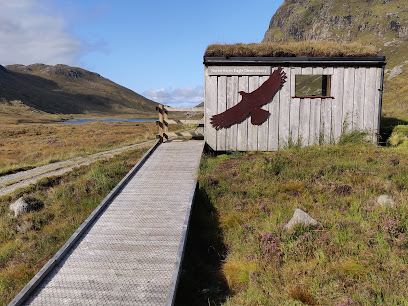
Nisabost Beach
Experience the serene beauty of Nisabost Beach, a tranquil coastal paradise on the Isle of Harris, perfect for relaxation and exploration.

Hebrides People Visitor Centre
Explore the heritage of the Outer Hebrides at the Hebrides People Visitor Centre, your gateway to history and culture on the Isle of Harris.

Amhuinnsuidhe Castle Estate
Discover the stunning Amhuinnsuidhe Castle Estate on the Isle of Harris, where luxury meets breathtaking Highland landscapes and outdoor adventures await.

MacLeod´s Stone
Explore MacLeod's Stone, an iconic monument on the Isle of Harris, where breathtaking views and rich history await every traveler.

Hebscape Gallery & Tearoom
Explore Hebscape Gallery & Tearoom for a delightful mix of local art and homemade treats on the beautiful Isle of Harris.

Borrisdale Tweed
Discover the essence of Harris at Borrisdale Tweed, where traditional craftsmanship meets stunning coastal beauty.

The temple
Discover The Temple on the Isle of Harris, a captivating tourist attraction blending history, breathtaking views, and tranquil nature.

Unmissable attractions to see
Lews Castle
Experience the rich history and breathtaking landscapes at Lews Castle, a stunning gem on the Isle of Lewis, perfect for tourists and history enthusiasts alike.

St Clement's Church : Rodel
Discover the historical charm of St. Clement's Church in Rodel, a serene sanctuary on the Isle of Harris, blending heritage with breathtaking landscapes.

Huisinis Gateway
Explore the stunning Huisinis Gateway on the Isle of Harris—your entryway to breathtaking landscapes and rich Scottish heritage.

Isle of Harris Distillery
Explore the Isle of Harris Distillery, a unique blend of tradition, craftsmanship, and breathtaking views on Scotland's stunning Isle of Harris.

Nisabost Beach
Discover the breathtaking beauty of Nisabost Beach, a serene gem on the Isle of Harris, where white sands meet turquoise waters in a tranquil setting.

Traigh Rosamol
Discover the untouched beauty of Traigh Rosamol, a spectacular beach on the Isle of Harris, where tranquility meets stunning coastal scenery.

Clach An Truishal Standing Stone
Explore the ancient wonders of Clach An Truishal Standing Stone on the Isle of Lewis, a captivating historical landmark steeped in myth and beauty.
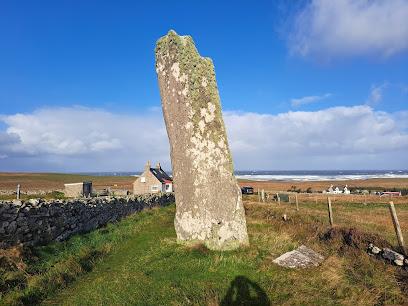
Lews Castle Grounds
Discover the stunning Lews Castle Grounds on the Isle of Lewis, where history and nature converge in a breathtaking landscape perfect for exploration.

Mangersta Sea Stacks
Experience the breathtaking Mangersta Sea Stacks on the Isle of Lewis, a stunning natural wonder showcasing Scotland's rugged coastline.

Hebrides People Visitor Centre
Explore the rich heritage and culture of Harris at the Hebrides People Visitor Centre, a must-visit for genealogists and history enthusiasts.

MacLeod´s Stone
Explore the enchanting MacLeod's Stone on the Isle of Harris, a stunning landmark with breathtaking views and rich Scottish history.

Sgarasta Mhòr Beach
Experience the unspoiled beauty of Sgarasta Mhòr Beach on the Isle of Harris - a tranquil public beach perfect for relaxation and adventure.

Borrisdale Tweed
Explore Borrisdale Tweed on the Isle of Harris for unique Scottish textiles and homewares, showcasing the artistry and heritage of Harris Tweed.
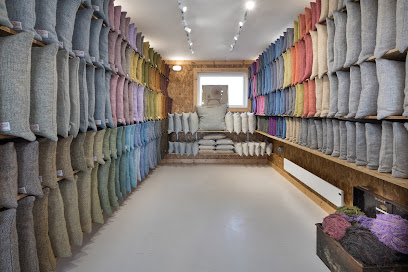
Bagh Steinigidh
Experience the serene beauty of Bagh Steinigidh, a stunning beach on the Isle of Harris known for its turquoise waters and breathtaking landscapes.
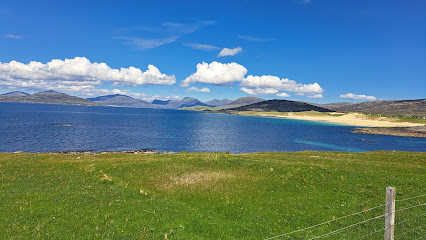
The temple
Discover the serene beauty and historical intrigue of The Temple on the Isle of Harris, a must-visit tourist attraction in Scotland.

Essential places to dine
Eleven Restaurant & Bar
Experience exceptional cuisine at Eleven Restaurant & Bar in Stornoway—where every meal is a celebration of flavor and hospitality.

HS-1 Cafe Bar
Discover local flavors at HS-1 Cafe Bar in Stornoway - where culinary excellence meets cozy comfort.

Harris Hotel
Discover comfort and Scottish charm at Harris Hotel on Isle of Harris – your gateway to breathtaking landscapes and unforgettable experiences.

Hotel Hebrides
Experience comfort and local charm at Hotel Hebrides in Tarbert—your gateway to exploring the breathtaking Isle of Harris.

Temple Harris
Discover delightful flavors at Temple Harris Cafe on the Isle of Harris – where artisan coffee meets stunning island views.

The Boatshed Restaurant
Experience exquisite Scottish cuisine at The Boatshed Restaurant in Stornoway—where local flavors meet breathtaking harbor views.

North Harbour Bistro
Experience unparalleled seafood dining at North Harbour Bistro on Isle of Scalpay, where every dish celebrates local flavors amidst stunning coastal views.

Talla na Mara Gift Shop
Explore Talla na Mara Gift Shop for unique gifts, local crafts, and cozy coffee moments on the stunning Isle of Harris.

Uig Sands Restaurant
Discover authentic Scottish flavors at Uig Sands Restaurant on the scenic Isle of Lewis, where local ingredients meet stunning coastal views.

The Anchorage Restaurant, Cafe & Bar
Experience fresh seafood delights at The Anchorage Restaurant in Leverburgh - where stunning views meet exceptional cuisine.

Croft36
Experience authentic Isle of Harris flavors at Croft36 Bakery – where every bite tells a story.

Harbour Kitchen
Experience the flavors of Stornoway at Harbour Kitchen – where fresh local ingredients meet exceptional dining.

Butty Bus
Discover Butty Bus on the Isle of Harris: A cozy café serving fresh local cuisine amidst breathtaking coastal views.
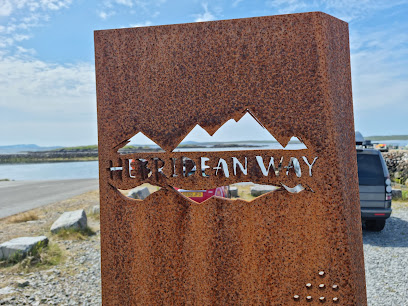
Scarista House
Discover luxury and natural beauty at Scarista House on the Isle of Harris – where stunning landscapes meet exceptional hospitality.

Pierhouse Cafe And Restaurant
Experience exquisite local cuisine at Pierhouse Cafe & Restaurant in Tarbert, Isle of Harris—where every meal comes with stunning harbor views.

Markets, malls and hidden boutiques
Harris Community Shop (An Clachan)
Discover the heart of the Isle of Harris at Harris Community Shop, your go-to destination for local goods and essentials.

Harris Tweed Isle Of Harris Shop
Explore authentic Harris Tweed clothing and gifts at the Isle of Harris Shop, a hub of local craftsmanship in a stunning island setting.

Talla na Mara Gift Shop
Discover unique local crafts and enjoy a cozy café experience at Talla na Mara Gift Shop on the stunning Isle of Harris.

Croft36
Discover the authentic taste of the Isle of Harris at Croft36 Bakery, where local ingredients meet traditional baking in a scenic coastal setting.

A D Munro
Discover local flavors and essentials at A D Munro, the friendly supermarket in Isle of Harris, where fresh produce meets Scottish hospitality.

Essence of Harris
Experience the essence of the Isle of Harris at this delightful gift shop featuring exquisite candles and unique homewares.
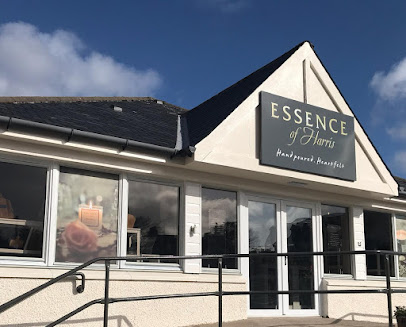
Loomshed Deli and Coffee Shop
Discover the warmth and flavor of Loomshed Deli and Coffee Shop in Tarbert, a perfect blend of local charm and culinary delight on the Isle of Harris.

Luskentyre Harris Tweed Co
Explore Luskentyre Harris Tweed Co, where tradition meets craftsmanship in the heart of the breathtaking Isle of Harris, offering unique textiles and local culture.

Hebscape Gallery & Tearoom
Explore local artistry and enjoy homemade delights at Hebscape Gallery & Tearoom on the Isle of Harris.

Borrisdale Tweed
Experience the craftsmanship of the Isle of Harris at Borrisdale Tweed, a unique homewares shop offering exquisite local artistry and souvenirs.

The Hebridean Mustard Company
Discover the authentic flavors of the Hebrides at The Hebridean Mustard Company - a unique culinary experience on the Isle of Harris.

John Morrisons Newsagents
Discover local convenience at John Morrison's Newsagents in Tarbert, your essential stop for snacks, drinks, and unique Scottish products.

Harris Tweed and Knitwear
Discover the artistry of Harris Tweed on the Isle of Harris, where tradition meets breathtaking landscapes in a unique shopping experience.

The Mission House Studio Ltd
Explore The Mission House Studio Ltd on the Isle of Harris for unique art, photography, and pottery crafted by local artisans in a stunning setting.

Grannie Annie's
Unearth unique treasures at Grannie Annie's, the Isle of Harris's charming gift shop and secondhand delight.

Essential bars & hidden hideouts
Harris Hotel
Experience the breathtaking landscapes and warm hospitality of Harris Hotel on the stunning Isle of Harris, Scotland.

Hotel Hebrides
Discover the charm and comfort of Hotel Hebrides, where cozy accommodations meet the stunning beauty of the Isle of Harris.

Temple Harris
Discover the flavors of the Isle of Harris at Temple Harris, a cozy café offering artisanal coffee and local delicacies amidst stunning landscapes.

McNeills
Discover the heart of Stornoway at McNeills Bar, where local flavors and a cozy atmosphere await you in the Hebrides.

Westford Inn
Discover the warmth of Scottish hospitality at Westford Inn – a cozy pub on the stunning Isle of North Uist offering delicious local cuisine and refreshing drinks.

Talla na Mara Gift Shop
Explore the heart of Harris at Talla na Mara Gift Shop, where unique gifts, local crafts, and a welcoming community await every visitor.

The New Lewis Bar
Experience the warmth of local hospitality at The New Lewis Bar, a family-friendly pub in Stornoway offering delicious food and a great selection of drinks.

Isle of Harris Distillery
Discover the Isle of Harris Distillery, where tradition meets artistry in every sip of exquisite whisky on Scotland's breathtaking shores.

The Criterion Bar
Experience the charm of Stornoway at The Criterion Bar - the perfect spot for a drink and local culture.

Butty Bus
Discover the flavors of Isle of Harris at Butty Bus, a charming restaurant and café offering local delights at the ferry terminal.
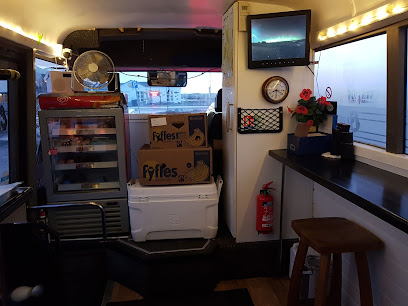
Star Inn
Experience the warmth of Scottish hospitality at Star Inn, a charming pub in Stornoway offering local delicacies and a cozy atmosphere.

The Bothy
Discover the warmth and charm of The Bothy, a cozy pub and café in Leverburgh, Isle of Harris, serving delicious local cuisine and drinks.
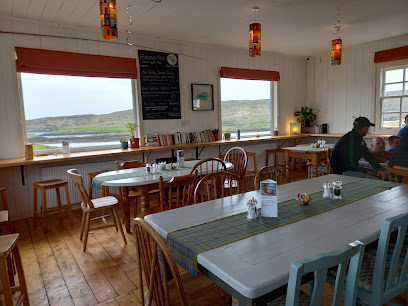
Pierhouse Cafe And Restaurant
Experience the best of Scottish cuisine with stunning harbor views at Pierhouse Cafe and Restaurant on the Isle of Harris.

Lorna's Larder
Experience the flavors of Tarbert at Lorna's Larder, where fresh fish and chips meet artisanal coffee in a stunning marina setting.
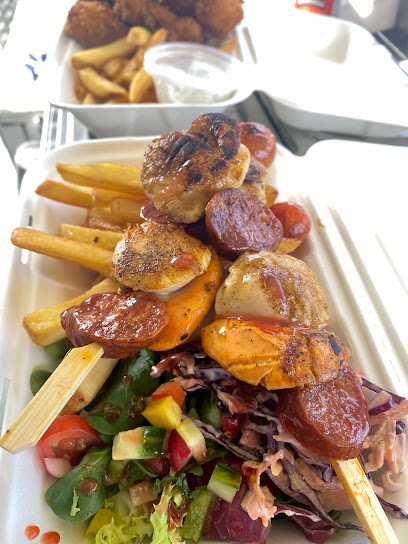
Old Barn Bar
Discover the warmth of the Old Barn Bar on the Isle of Lewis, a perfect blend of a cozy inn and lively bar amidst breathtaking landscapes.

Local Phrases about Isle of Harris
-
- HelloHalò
[ha-loh] - GoodbyeBeannachd leat
[ban-ach le-at] - YesTha
[ha] - NoChan eil
[chan el] - Please/You're welcomeFeuch
[fyooch] - Thank youTapadh leat
[ta-puh le-at] - Excuse me/SorryFuirich/Sgìth mi
[foo-reach/skee vee] - How are you?Ciamar a tha thu?
[kee-uh-mar uh ha hoo] - Fine. And you?Math. Agus thu?
[mah ah-gus hoo] - Do you speak English?A bheil Gàidhlig agad?
[uh vel gah-lik a-gut] - I don't understandChan eil mi 'tuigsinn
[chan el mee too-eesh-in]
- HelloHalò
-
- I'd like to see the menu, pleaseBu choir dhomh an menia a fhaicinn, mas e do thoil e
[boo chore ghov un men-yah ah eye-kin, mas eh doh hull eh] - I don't eat meatChan ith mi feòil
[chan eeth mee foh-il] - Cheers!Slàinte!
[slahn-chuh] - I would like to pay, pleaseBu choir dhomh pàigheadh, mas e do thoil e
[boo chore ghov pay-eek, mas eh doh hull eh]
- I'd like to see the menu, pleaseBu choir dhomh an menia a fhaicinn, mas e do thoil e
-
- Help!Cobhair!
[koh-ir] - Go away!Falbh air falbh!
[fall-uh air fall-uh] - Call the Police!Cuimhnich air na Poileas!
[coo-in-ich air nuh pol-is] - Call a doctor!Cuimhnich air dhoctair!
[coo-in-ich air doch-ter] - I'm lostTha mi air chall
[ha mee ar chal] - I'm illTha mi tinn
[ha mee cheen]
- Help!Cobhair!
-
- I'd like to buy...Bu choir dhomh ceannach...
[boo chore ghov can-ach] - I'm just lookingTha mi airson faicinn a-mhàin
[ha mee ar-son fak-een ah-van] - How much is it?Cia mheud a tha e?
[kee-uh vud uh ha eh] - That's too expensiveTha sin ro dhuilich
[ha shin roo ghoo-lich] - Can you lower the price?Am faod thu an t-àireamh a ìsliuchadh?
[am foh-ud hoo un tah-ree-av ah eesh-loo-chuh]
- I'd like to buy...Bu choir dhomh ceannach...
-
- What time is it?Dè an t-am a th' ann?
[jay un tahm ah han] - It's one o'clockTha e aon uairean
[ha eh ayn oo-air-an] - Half past (10)Leath uair as a deich
[lay-uh oo-air as ah jaych] - MorningMadainn
[mah-dan] - AfternoonFeasgar
[fes-gar] - EveningFeasgar
[fes-gar] - YesterdayDè 'bha ann an-dè?
[jay va ahn an-djay] - TodayAn-diugh
[ahn-joo] - TomorrowA-màireach
[ah-vah-ree-ach] - 1Aon
[ayn] - 2Dà
[dah] - 3Trì
[tree] - 4Ceithir
[keh-er] - 5Còig
[co-ik] - 6Sia
[shee-ah] - 7Seachd
[shachk] - 8Ochd
[ocht] - 9Naoidh
[nee] - 10Dèug
[jayk]
- What time is it?Dè an t-am a th' ann?
-
- Where's a/the...?Càite a bheil a'...?
[kah-chuh uh vel ah] - What's the address?Dè an seòladh?
[jay un shoh-luh] - Can you show me (on the map)?Am faod thu sealladh dhomh (air a' mhapa)?
[am foh-ud hoo shall-uh go-v air ah wah-puh] - When's the next (bus)?Cuin a thig an ath (bus)?
[kween ah hig ahn ah bus] - A ticket (to ....)Ticead (gu ....)
[chee-kat goo]
- Where's a/the...?Càite a bheil a'...?
History of Isle of Harris
-
The Isle of Harris has been inhabited since the Neolithic period, with evidence of ancient settlements scattered across the island. The Callanish Stones, located on the nearby Isle of Lewis, are a testament to the early human presence in the region. These standing stones are thought to have been erected around 2900 BC and are believed to have been used for ritualistic purposes.
-
In the 9th century, Norsemen began to settle in the Hebrides, including the Isle of Harris. The Norse influence is still evident in the place names and the culture of the island. For example, the name 'Harris' is derived from the Old Norse 'Héræys', meaning 'High Island'. The Vikings left a lasting impact on the island's social structure, agriculture, and maritime practices.
-
In the Middle Ages, the Isle of Harris became part of the Lordship of the Isles, a semi-independent kingdom that controlled much of the Hebrides and parts of the Scottish mainland. The Lords of the Isles were powerful chieftains who ruled from the 12th to the 15th centuries. They maintained a Gaelic culture and fought for autonomy from the Scottish crown.
-
The MacLeod clan became the dominant force on the Isle of Harris in the 14th century. The clan's stronghold was Dunvegan Castle on the nearby Isle of Skye, but they also held lands on Harris. The MacLeods were known for their fierce independence and often clashed with rival clans. Their influence is still felt today, with many islanders tracing their ancestry back to the MacLeods.
-
The 18th and 19th centuries were a period of significant upheaval for the Isle of Harris, marked by the Highland Clearances. Landowners evicted many tenant farmers to make way for sheep farming, leading to widespread displacement and emigration. This period had a profound impact on the island's population and cultural landscape, with many residents forced to leave for the Scottish mainland or overseas.
-
Harris Tweed, a world-renowned fabric, has its origins on the Isle of Harris. The industry began in the 19th century, with local weavers producing the cloth in their homes. Harris Tweed is made from pure virgin wool, dyed, spun, and handwoven by islanders. It has become a symbol of quality and craftsmanship, with a protected designation of origin ensuring that only tweed produced in the Outer Hebrides can be called Harris Tweed.
-
Today, the Isle of Harris is a thriving community that balances tradition with modernity. The island is known for its stunning landscapes, including the beaches of Luskentyre and Seilebost, as well as its cultural heritage. The local economy is supported by tourism, fishing, and the Harris Tweed industry. Community initiatives and sustainable practices are helping to preserve the island's unique way of life for future generations.
Isle of Harris Essentials
-
The Isle of Harris is part of the Outer Hebrides in Scotland. The most common way to get there is by ferry from Ullapool to Stornoway on the Isle of Lewis, which is connected to Harris by road. Caledonian MacBrayne (CalMac) operates the ferry services. The closest airport is Stornoway Airport (SYY), with regular flights from major UK cities such as Glasgow, Edinburgh, and Inverness. From the airport, you can rent a car or take a bus to Harris.
-
Public transport on the Isle of Harris is limited but available. Local buses operate between key locations, and taxis are also an option. However, renting a car is highly recommended for flexibility and convenience when exploring the island. Cycling is another popular way to get around, given the island's scenic routes. Walking is feasible for shorter distances and offers a great way to experience the natural beauty.
-
The official currency is the British Pound Sterling (GBP). Credit and debit cards are widely accepted, but it's advisable to carry some cash for smaller businesses and rural areas. ATMs are available in major villages such as Tarbert. Ensure you have enough cash before heading to more remote parts of the island.
-
The Isle of Harris is generally very safe for tourists. Crime rates are low, and the local community is welcoming and friendly. Nonetheless, standard travel precautions should be taken. Keep an eye on your belongings, especially in crowded places like ferry terminals. There are no specific high-crime areas targeting tourists.
-
In case of emergency, dial 999 for police, fire, or medical services. The main medical facility is the Western Isles Hospital in Stornoway. For minor health issues, local pharmacies are available in Tarbert and other larger villages. It's advisable to have travel insurance that covers medical emergencies.
-
Fashion: Do dress in layers and bring waterproof clothing, as the weather can be unpredictable. Avoid overly casual attire when dining in finer establishments. Religion: Do respect local customs and traditions, especially when visiting churches and religious sites. Remove hats and speak softly. Public Transport: Do be punctual for bus services, as they run on a strict schedule. Don't expect frequent services, especially on weekends. Greetings: Do greet people with a friendly 'hello' or 'good morning'. A handshake is common for formal introductions. Eating & Drinking: Do try local dishes such as fresh seafood and black pudding. Don't refuse hospitality, as it is considered impolite.
-
To experience the Isle of Harris like a local, visit the local markets where you can buy fresh produce and handmade crafts. Engage with locals, as they are often willing to share stories about the island's culture and history. Don't miss the opportunity to explore the stunning beaches such as Luskentyre and Seilebost. For a unique experience, participate in a Harris Tweed weaving workshop or take a guided wildlife tour.
Trending Landmarks in Isle of Harris
-
Calanais Standing Stones
-
Butt of Lewis Lighthouse
-
Luskentyre Beach
-
St Clement's Church : Rodel
-
Temple Harris
-
Harris
-
Eilean Glas Lighthouse
-
North Harris Eagle Observatory
-
Nisabost Beach
-
Hebrides People Visitor Centre
-
Amhuinnsuidhe Castle Estate
-
MacLeod´s Stone
-
Hebscape Gallery & Tearoom
-
Borrisdale Tweed
-
The temple
Nearby Cities to Isle of Harris
-
Things To Do in Stirling
-
Things To Do in Glasgow
-
Things To Do in Dundee
-
Things To Do in Aberdeen
-
Things To Do in Edinburgh
-
Things To Do in Derry
-
Things To Do in Belfast
-
Things To Do in Vágur
-
Things To Do in Tvøroyri
-
Things To Do in Sligo
-
Things To Do in Ramsey
-
Things To Do in Kirk Michael
-
Things To Do in Peel
-
Things To Do in Nólsoy
-
Things To Do in Argir












